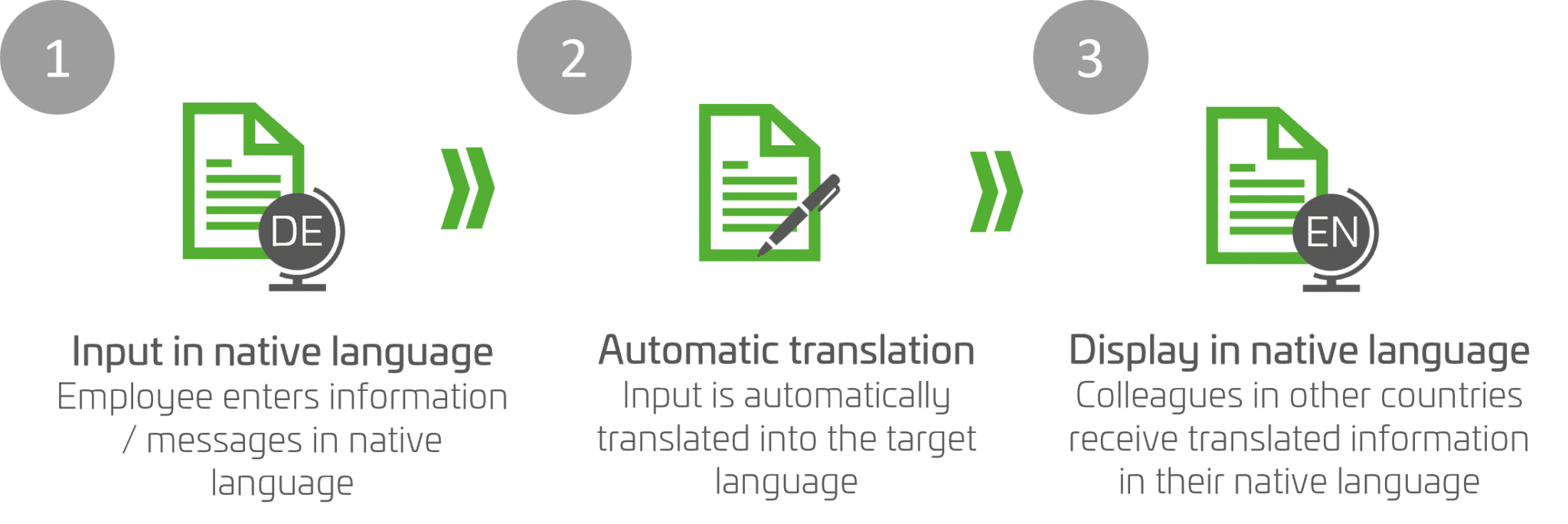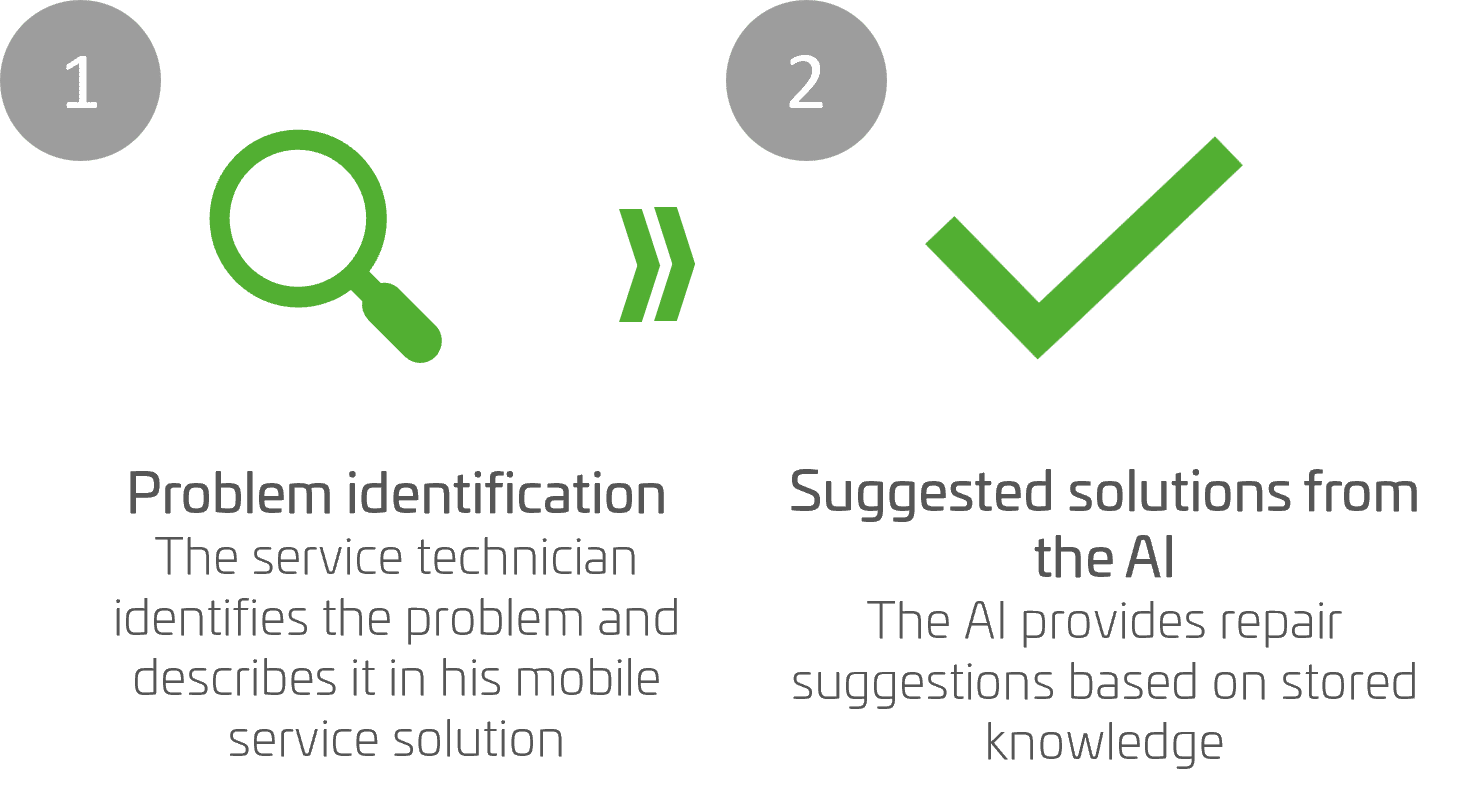Using AI to optimize customer relationship management
How to guarantee even more efficient customer management

According to a bitkom study , 70% of German companies consider artificial intelligence (AI) to be the most important technology of the future. Nevertheless, almost half of the companies still consider their own use of AI to be in need of catching up. Especially in the area of customer management, AI scenarios can achieve significant increases in efficiency. In this blog post, we have compiled the most important use cases as well as the current challenges for you.
What is artificial intelligence?
There is no uniform definition of AI, as the topic is very broad and versatile. Different institutions and experts have different approaches and focuses when describing AI. The European Parliament defines AI as the ability of a machine to mimic human abilities such as logical thinking, learning, planning and creativity in order to replicate and improve human behaviour and decision-making processes. To achieve this, technologies such as machine learning, neural networks, natural language processing, and many more techniques are used. These make it possible to learn from data and adapt to new situations to tackle complex tasks that previously could only be done by humans.
Today, the topic of artificial intelligence can be clustered into six areas:
Why should you use AI in customer relationship management?
Limited resources, the challenge of qualified experts and the constant trend of spending a lot of time on meetings and communication are probably the most important reasons why companies should rely on AI today. If you believe a study by Microsoft, around 60% of the available time is spent on emails, chats and meetings and only 40% of the working time on value-adding activities. This clearly shows that companies can relieve their employees of time-consuming, repetitive tasks by automating routine tasks using AI. This allows employees to focus on more important and value-adding activities. Especially in the area of customer management, there is considerable potential for optimization here. For example, AI can automate data entry, the processing of customer inquiries or even the follow-up of customer appointments. This not only increases efficiency and the quality of work, but also allows employees to dedicate their time and energy to more important and, above all, more value-adding tasks.
Practical examples: artificial intelligence in customer management
In the following, we present some application examples of how artificial intelligence can be successfully integrated into the CRM process to increase efficiency and productivity in customer management.
Use Case 1: Document Intelligence Using the Example of Service Specifications
Goal: Efficient processing of requests or tender documents (RFP or RFQ)) through automated document analysis and product allocation. Challenge: Many companies regularly receive requests for proposals from their customers via emails or receive extensive lists of requirements in various formats such as PDF or Word.
Especially in the construction and construction supplier industry, these are often very extensive documents and bills of quantities, which often contain over 1000 items.
One of our customers, for example, receives several thousand tenders per month.
Manually processing these documents is not only time-consuming, but also extremely error-prone. AI-powered request management:
- 1
Document Receipt: A customer uploads a request document or sends it via email.
- 2
Document processing: The uploaded document is automatically scanned and analyzed.
- 3
Database matching: The contents of the document are compared with an internal database to identify potentially suitable products or solutions.
- 4
Automatic product assignment: Based on the analysis, the requirements document is automatically assigned to suitable products or services.
This mapping is usually highly precise. - 5
Transparency for the user: The user can understand the process and see the reasons for the product suggestions.
- 6
Preparation of quotations: Based on the identified products or solutions, an quotation can be prepared within a very short time.

Advantages:
Use Case 2: Voice-Based Visit Report Capture
Goal: Voice-based visit report recording with subsequent structuring of the recorded content and update of the data in the CRM Challenge: After each customer appointment – whether on-site or virtually – the sales staff should document a short minutes of the conversation in the CRM.
However, since almost every sales employee today has to do so many administrative tasks that he or she has almost no time to sell anyway, this unpleasant task is often neglected. AI-Powered Visit Report Capture
- 1
Data entry: The sales rep speaks the visit report into a mobile device of their choice.
- 2
Transcription and structuring of the spoken data: The AI transcribes the spoken text and extracts from it the data for which an update needs to be carried out in the CRM data record or for which a follow-up action is necessary, and creates it immediately in the CRM.
- 3Adjustment: The sales employee can still adjust the transcribed data if desired.

Advantages:
Use case 3: Automatic translation of CRM entries
Goal: Efficiently and accurately translate CRM data for international offices to improve communication in different languages. Challenge: International companies often face the challenge of communicating effectively with customers and team members in different countries.
This communication can be complicated by language barriers, especially when different native languages are involved. AI-powered translation in a CRM context:
- 1
Recording information in their native language: An employee enters information or messages into the CRM system in their native language, for example in German.
- 2Automatic translation: A specialized translation AI automatically captures the entered German data and translates it into Polish, for example at the Polish colleague.
- 3
Display in native language: Colleagues in other countries will receive the translated information directly in their native language (e.g. English for international teams or Polish for the team in Poland).

Advantages:
Use Case 4: Knowledge Management Specifically for Service Assignments
Goal: Optimized knowledge management for service assignments Challenge: Not everyone is omniscient – this also applies to a service technician who has to rectify a fault or repair an entire system.
Nowadays, a company usually has a very fragmented knowledge across different systems, departments and employees.
Especially in the area of after-sales, it is advantageous if knowledge about machines and systems is shared in a structured way so that all service staff have quick and easy access to it. AI-based knowledge management in customer service:
- 1The service technician identifies the problem: The service employee describes the problem at hand in his mobile service solution.
- 2The AI provides suggested solutions: Based on stored knowledge from various sources, the AI provides repair suggestions that the service employee can now implement.

Advantages:
Challenges with the use of AI in CRM
The use of AI in CRM offers numerous benefits to companies, but it also comes with specific challenges that need to be taken into account:
These challenges highlight the need for careful planning, implementation, and monitoring when using AI in CRM to realize the desired benefits and minimize potential risks.
Result
We are in the early days of artificial intelligence, but the coming years promise rapid development that will open up numerous new opportunities and potential for companies.
There are already some benefits to be realized, such as the significant increase in efficiency through the automation of repetitive and manual tasks.
Companies should actively invest in further development with AI and not shy away from the challenges.
However, topics such as transparency, data security and the necessary technical understanding should not be ignored.
It is therefore essential to address these aspects responsibly in order to make the most of the opportunities offered by AI while minimizing potential risks.
Our tip for companies that want to use AI: It is not always necessary to immediately introduce the complete AI solution or the big picture.
Instead, companies can use partial aspects of artificial intelligence to gradually familiarize themselves with it and still achieve significant benefits without the challenges outweighing the challenges.
Listen to our podcast (only available in german) to learn more.
About the author


